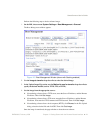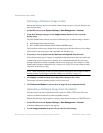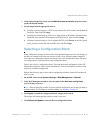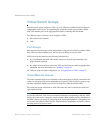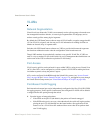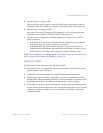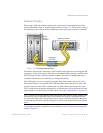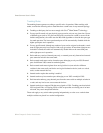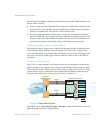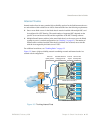SmartConnect User’s Guide
BMD00082, February 2009 Chapter 3: Switch Virtualization
29
Upon the ingress of tagged packets:
Packets which are already tagged for specific VLANs prior to reaching the switch are
unchanged (retain their original tag), regardless of the PVID setting on the ingress port.
Upon the egress of untagged packets:
After ingress processing, if the packet is still untagged, it will remain untagged when
egressing the port, regardless of the PVID setting on the egress port.
Upon the egress of tagged packets (whether tagged prior to ingress, or as a result of
ingress processing):
If the PVID on the egress port is different than that of packet’s tag, the packet will
remain unchanged upon egress, retaining it’s current tag.
If the PVID on the egress port matches the packet’s tag, the VLAN tag will be
stripped from the packet header. One application of this feature is to remove tags on
traffic bound for servers that are not configured to support multiple VLANs.
PVIDs can be configured in the BBI through the Switch Policy menus (see “Internal Port Set-
tings” on page 102 and “External Port Settings” on page 103).
Defined VLANs
The VSE SmartConnect software uses the following VLANS:
The default VLAN is an untagged VLAN used for data traffic, and contains all external
ports and internal server-blade ports.
Individual VLANs can be specified for switch IP Interfaces and stack interface.
If the stacking feature is enabled, VLAN 4090 is reserved for segmenting inter-switch
stacking traffic. Though the default stacking VLAN can be changed, it is strongly recom-
mended that the default VLAN 4090 be used and reserved solely for stacking.
VLAN 4095 is used by the management network, which includes the management ports
and (by default) the internal blade ports. This configuration allows Serial over LAN (SoL)
management, a feature available on certain server blades. VLAN 4095 configuration
cannot be modified.



